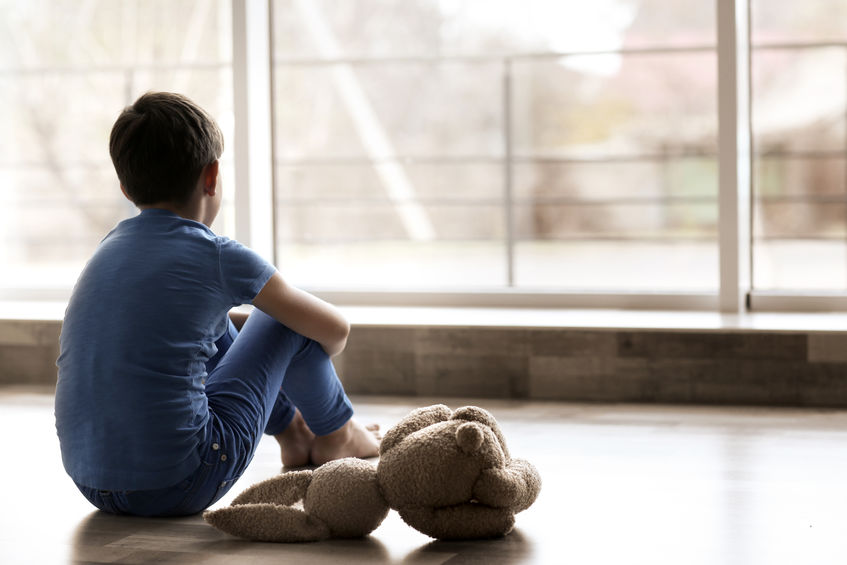
With the cold weather approaching fast, it can take a toll on the mental health of both parents and children. Spending even more time indoors than before to avoid the cold weather can cause anxiety and depression in adults and children.
It is important to keep track of your and your child’s mental health during the fall and winter months and be aware of how the cold season can affect your mood and wellness.
Seasonal Affective Disorder (SAD) description
Studies have shown that extreme weather can negatively affect mental health. Staying inside and receiving less sunlight means that our bodies produce less serotonin, which is the neurotransmitter associated with happiness, and more melatonin, a chemical associated with sleepiness and depression. That can lead to a type of depression called Seasonal Affective Disorder (SAD).
SAD is a recurring type of depression that is associated with the seasons. About 10-20% of the U.S. population experience SAD symptoms that remain present for about 40% of the year, with about 2-6% of that including children. With shorter days and more time spent indoors, SAD symptoms appear during the late fall and winter months. A few specific symptoms include:
- Decreased interest in activities you used to enjoy
- Low energy throughout the day
- Longer time spent sleeping
- Craving carbohydrates and eating more than usual
- Social withdrawal
- Feeling excessively worthless or guilty
Fostering a positive mindset during the winter months may be difficult, but there are a few ways to maintain wellness while staying indoors in the face of a pandemic.
Importance of maintaining wellness
Wellness is defined by the World Health Organization (WHO) as “a state of complete physical, mental, and social well-being and not merely the absence of disease or infirmity.” It’s the practice of healthy habits to maintain a thriving lifestyle. Maintaining wellness is crucial to reducing the risk of illness and stress, especially while working and learning from home.
For both children and adults, maintaining regular sleeping and eating habits, exercising for at least 30 minutes a day, and staying socially connected during the winter months can make a world of difference in your mood. Mindfulness techniques such as body scans, breathing exercises, and meditation can help both children and adults focus their minds and become more aware of their feelings and thoughts.
Light Therapy
A technique that can help those suffering from SAD or depressive moods during the colder months is light therapy. On a typical sunny day, the sunshine provides 50,000-100,000 lux. In contrast, a cloudy winter day offers less than 10% of that amount at around 4,000 lux.
Lightboxes that produce about 2,500 lux have been proven to support the creation of serotonin in the body. You can find fluorescent white lightboxes of 10,000 lux without harmful ultraviolet wavelengths that are made specifically to address seasonal depression. The light should be positioned 12-18 inches away from you and stay there for about 30 minutes, keeping your eyes open but averted from the light.
Light therapy can be beneficial, but you should consult your doctor before beginning this treatment. Possible side effects can include headache, eye strain, sleep disturbance, or nausea.
If you or your child experiences symptoms of depression for more than two weeks, you should seek help from a mental health professional.
Indoor Activities to Consider
For children, staying indoors during the winter months can be frustrating and lonely. Checking in with your kids and helping them keep in touch with family and friends during the cold months is vital, even if they cannot see them in person. The sense of connectedness can boost your child’s mood and help them remember that they are not alone.
Keeping yourself and your children active is one of the simplest and most effective ways to stay positive during the colder weather. Bundle up and take short walks to get outside and get your blood pumping. You can create an indoor scavenger hunt for your child or find one online. It’s a great way to stimulate both their minds and bodies and keep them occupied for a good part of the day.
Other activities you can consider doing with your children are DIY crafts that they can either work on independently or with you. Fun projects like creating scrapbooks, working on art, writing stories, or building something can keep them busy and occupied both mentally and physically. Other ideas include writing letters to loved ones or baking something delicious together. It can feel exhausting trying to entertain your children for days on end as they get antsy indoors, but you can help your child see the benefits by reframing the situation. Instead of focusing on the negative aspects of staying inside, help your child to see the positive aspects or think about the things they are grateful for during this time.

Emily currently lives in Orange County, California after spending four years in Illinois and half a year teaching in Florence, Italy. She holds a B.A. in English Literature from Knox College and an M.A. in Counseling from the University of San Diego and has taught English to native speakers and ESL students for over three years. When she’s not working as a School Counselor or writing, she enjoys traveling the world, playing instruments, and blogging about Millennial experiences at Long Live the Twenties.
